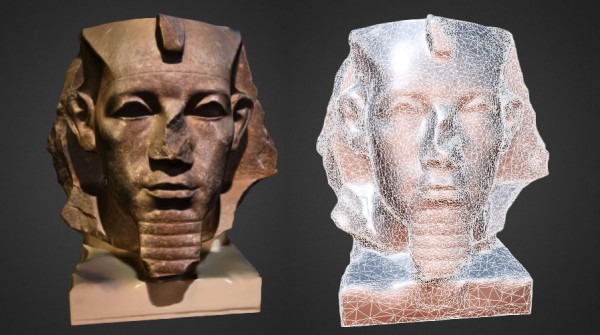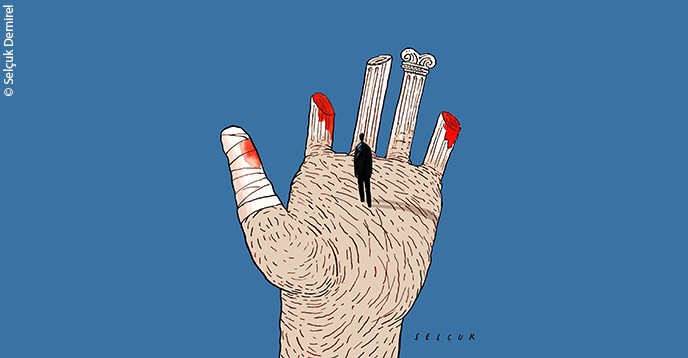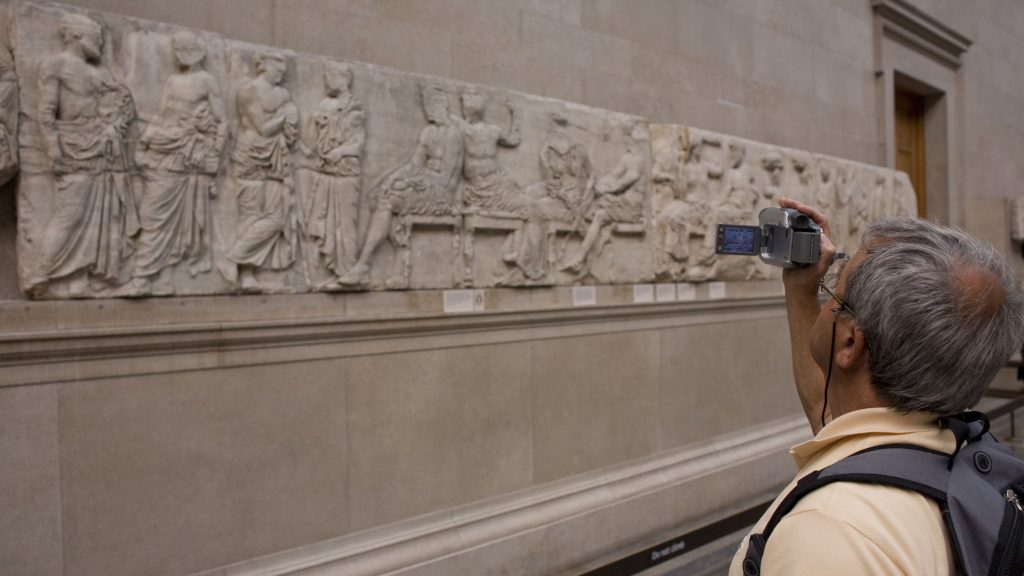3D printing has seen a major rise in popularity in the past few decades, primarily due to its ability to print environmentally sustainable materials, cut down supply chain issues, as well as its ability to recreate and produce objects efficiently. While 3D printing is often commended for its sustainability aspects, it has also found its way into the arts and museum industry. Artists are able to use 3D printing technologies to make sculptures affordably and efficiently, while museums have been known to use the technology to promote a more tactile, interactive, and inclusive environment for the visually impaired. In the present day, the subject of 3D printing in museums has also begun to revolve around the practice of repatriation, or the return of artworks, objects, and antiquities to their home countries. In the past few years, based on study conducted by a team at the University of Brighton, many in the museum world have started toying with the idea of returning objects and antiquities to their home countries after 3D scanning and printing the object at hand, but what are the ethics surrounding repatriation and what right do we have to copy the objects at all? While there are many differing opinions on repatriation, this compromise over being able to 3D print objects and antiquities prior to their return perpetuates the colonialist concepts rooted in the history of museums overall. To move forward with repatriation efforts, museums would need to be willing to create a more universal museum culture of sharing knowledge and resources between each other, instead of basing their decisions around repatriation based on the benefit to their own collections.
The 3D printing process begins by simply designing a 3D object on a computer or via a 3D scanning apparatus that allows users to scan existing objects, which is then converted to a digital file to be sent to a 3D printing machine. The machine then converts the file into tons of miniscule slices, which begin printing from the bottom up to recreate the object. In an article from the Independent explaining this process, they compare it to “baking each individual slice of bread and then gluing them together into a whole loaf.” As the process goes on, the small layers meld together in order to form the solid object. Typically, objects are printed with plastic filament, though other biodegradable filament options are now being explored, such as recycled plastic waste, recycled concrete, and plant-based materials.
3D printing has primarily been seen used in museums to assist with interactive experiences and to create a more accessible and tactile environment for visually impaired individuals. 3D printed objects, unlike the real thing, can be easily recreated, and thus make them the perfect alternative to the average museum object, as patrons with visual impairments can feel free to touch and feel the objects to their liking. As the use of 3D printing in museums has turned towards conservation and archaeological aspects in the past few years, the subject of repatriation and decolonization of museums has become a hot topic amongst those that see the opportunity to use this technology in order to maintain ethical standards in the museum industry.

Repatriation and provenance, the written history of ownership and acquisition of antiquities, first legally entered the museum space via the 1970 UNESCO Convention on the Means of Prohibiting and Preventing the Illicit Import, Export and Transfer of Ownership of Cultural Property. This Convention “encourages cooperation among nations to prevent the illicit movement of cultural property across borders,” and while it does require the use of provenance and provides assistance in returning objects to their home countries, these said home countries are required to pay a “just amount” to whatever nation currently holding these objects if they are deemed “innocent purchasers” or hold a valid title to the object. It is important to note that even “innocent purchasers” can, in actuality, be owners of illegally taken antiquities and artifacts. Furthermore, as outlined by the Getty Conservation Institute, “much of the responsibility for controlling the illegal flow of cultural property is placed on the states of origin.” While this Convention written in 1970 certainly helped slow and squander the illegal trade of antiquities between nations and their museums, it does not necessarily ensure that home countries looking to recollect their historical objects and antiquities have that immediate right to own their own past.

Several famous cases of repatriation have arisen since the implementation of the 1970 UNESCO Convention, with the British Museum most often being cited and their collections of Greek, Egyptian, and Roman works. The case against their ownership of a portion of the Greek Parthenon frieze often sees the most debate. More than 200 years ago, the Parthenon marbles were taken under the supervision of Thomas Bruce, Earl of Elgin, who was serving as the British ambassador to the Ottoman Empire (which then ruled over Greece). The British Museum officially bought the marbles from the British ambassador in 1816. Since Greece obtained its national freedom in 1832, they have made several attempts to demand the return of the Parthenon frieze, citing that Lord Elgin had no legal or ethical right to take it in the first place. These attempts have proven to be unsuccessful, with the British Museum now positioning itself as “preservers” of the marbles, despite its proven history of poorly executed preservation and maintenance efforts. While the ownership of non-indigenous antiquities and historical objects might be acceptable if it were being done under the umbrella of a “universal museum of knowledge and cross-cultural sharing,” many of these objects were taken from developing countries and continue to be kept in a perpetuation of colonialist practices. These long-existing and ongoing debates of ownership are a major pillar in the concept that 3D printing can be used effectively within the practice of repatriation and the decolonization of the traditional museum, but how might this work?

The main idea behind using 3D printing technology to support repatriation is that museums would now be able to “digitally store their collections and reproduce them in physical form, so that they can return the original items to their countries of origin.” The study conducted at the University of Brighton’s Centre for Secure, Intelligent, and Usable Systems points to 3D printing as being an opportunity to “democratize the art of copying so it isn’t limited to big museums with generous budgets or top experts with specialist knowledge…[and that] digital files of artifacts can be shared online and replicas can be printed in other parts of the world.” This latter statement is an interesting point that has not been touched upon in other analyses of this study, and reflects on the idea of this “universal museum of knowledge and cross-cultural sharing” that was touched upon previously. With this latter statement taken into consideration, this practice could prove to have potential in the realm of repatriation, though it does not seem to be being taken seriously by museum professionals.

In a case from 2016, there was an inner leak from the collections department at the Neues Museum in Berlin, Germany, in which a 3D scanned digital file was released via the internet. Prior to this incident, the museum had been adamant that photographs were not allowed of the bust, in order to protect their supposed image rights. While the museum put out a story that the scan had been taken illegally by two artists that had managed to sneak a 3D scanning apparatus into the museum, their cover story was found at fault when the leaked scan showed a digital copyright tag directly related to the museum and their collections department. Since this incident, EU law has been amended in order to no longer allow public artworks to be protected under simple copyright. While the museum still owns the object, they no longer have the rights to the digital scan that they made and was subsequently leaked. Laws like the one established in the European Union support the idea of this universal museal connection, which would more ethically allow the repatriation of objects. While the idea of 3D scans being open to the public, and whomever may want access to it seems like it could have its downfalls, a shared museum connection could introduce a more equitable foundation within the museum industry.
3D printing could offer great benefits to the museum world and the drive for repatriation efforts if used in a way where the image of an antiquity, artifact, or historical objects was still being exploited by some way connected to its colonially acquired context. While the subject is complicated and much still needs to be thought about critically in order to remove ourselves from all past associated colonialist contexts within the museum system, the ever growing present day technologies available to us have the potential to assist in rectifying past exploitation if used thoughtfully.
Bibliography
Boissonneault, Tess. “Will 3D Printing Play a Role in the Decolonization of Museums?” 3D Printing Media Network – The Pulse of the AM Industry, January 20, 2020. https://www.3dprintingmedia.network/3d-printing-museums-deconolozation/.
Bruney, Gabrielle. “Why Is the British Museum Still Fighting to Keep the Parthenon’s Marble Sculptures?” Zócalo Public Square, March 18, 2020. https://www.zocalopublicsquare.org/2020/03/18/elgin-marbles-brexit/ideas/essay/.
Castenson, Jennifer. “3D Printing Offers Outstanding Sustainability Benefits, While Also Avoiding Supply Chain Issues.” Forbes. Forbes Magazine, October 12, 2021. https://www.forbes.com/sites/jennifercastenson/2021/10/12/3d-printing-offers-outstanding-sustainability-benefits-while-also-avoiding-supply-chain-issues/?sh=785fd165eafe.
Campbell-Dollaghan, Kelsey. “3D Printing Is Quietly Transforming an Unexpected Industry: Museums.” Fast Company. Fast Company, April 4, 2019. https://www.fastcompany.com/90328532/3d-printing-is-quietly-transforming-an-unexpected-industry-museums.
Charr, Manuel. “Legal Case Concerning a 3D Scan of a Museum Artefact May Impact on All Institutions.” MuseumNext, March 29, 2021. https://www.museumnext.com/article/legal-case-concerning-a-3d-scan-of-a-museum-artefact-may-impact-on-all-institutions/.
Coates, Charlotte. “How Are Some of the World’s Best Known Museums Doing Amazing Things with 3D Printing?” MuseumNext, March 8, 2021. https://www.museumnext.com/article/how-museums-are-using-3d-printing/.
Deakin, Tim. “How Museums Can Remove Barriers to Access for Blind and Partially Sighted People.” MuseumNext, January 20, 2022. https://www.museumnext.com/article/how-museums-can-remove-barriers-to-access-for-blind-and-partially-sighted-people/.
“Convention on the Means of Prohibiting and Preventing the Illicit Import, Export and Transfer of Ownership of Cultural Property (1970).” The Getty Conservation Institute. The Getty. Accessed May 3, 2022. https://www.getty.edu/conservation/publications_resources/research_resources/charters/charter17.html.
Holland, Claire. “Ethics and Cultural Institutions - Can Digitisation ‘Save’ Museums from Repatriation?” Medium. Medium, April 3, 2020. https://medium.com/@claireholland291198/ethics-and-cultural-institutions-can-digitisation-save-museums-from-repatriation-283e864b2495.
Sookaman, Randy H. “Ethics, Ancient Artifact Repatriation & Museums.” ART STORIA. Accessed May 3, 2022. https://www.artstoriagalleria.com/ethics-repatriation-and-museums.
Tharoor, Kanishk. “Museums and Looted Art: The Ethical Dilemma of Preserving World Cultures.” The Guardian. Guardian News and Media, June 29, 2015. https://www.theguardian.com/culture/2015/jun/29/museums-looting-art-artefacts-world-culture.
“Using Plastic Alternatives for 3D Printing .” Waste to Sustainable Thermoplastic Solution. UBQ Materials, January 11, 2022. https://www.ubqmaterials.com/blog-post/using-plastic-alternatives-for-3d-printing/.
“Convention on the Means of Prohibiting and Preventing the Illicit Import, Export and Transfer of Ownership of Cultural Property 1970.” UNESCO.org. United Nations Educational, Scientific, and Cultural Organization. Accessed May 3, 2022. http://portal.unesco.org/en/ev.php-URL_ID=13039&URL_DO=DO_TOPIC&URL_SECTION=201.html.
“How 3D Printing Can Help Repatriate Colonial Artefacts.” University of Brighton. University of Brighton, September 29, 2021. https://www.brighton.ac.uk/news/2019/how-3d-printing-can-help-repatriate-colonial-artefacts.
Walker, Andrew. “How Do 3D Printers Work?” The Independent. Independent Digital News and Media, March 24, 2021. https://www.independent.co.uk/tech/what-is-3d-printing-b1821764.html.
Zhang, Megan. “Could 3D Scanning Further Complicate Art Repatriation?” Hyperallergic, December 10, 2021. https://hyperallergic.com/695572/could-3d-scanning-further-complicate-art-repatriation.